by Brad Dieter, MS, CISSN, CSCS.
 This post started out to be a brief overview of fats and then my nerdy side kicked in and I wanted to address a wide range of questions; therefore, I decided to start a small series of fat related topics. So, the first post in quest to explain fat is to address why they have been vilified, and why the early research was not correct.
This post started out to be a brief overview of fats and then my nerdy side kicked in and I wanted to address a wide range of questions; therefore, I decided to start a small series of fat related topics. So, the first post in quest to explain fat is to address why they have been vilified, and why the early research was not correct.
Fat gives you love handles, clogs your arteries, causes disease, and should be avoided at all costs. The government says so, your low-fat Wheat Thins says so, and your very well intentioned marathon running uncle says so. Therefore, fat is bad, AND you shouldn’t eat fat. I mean that sounds like solid logic right? Well unfortunately your well intentioned uncle is wrong, your Wheat Thins aren’t helping your six pack, and the government is lying to you.
In fact, fat is essential, your body requires it and you can’t live without it. Dietary fat is not the main culprit behind your love handles, your “clogged” arteries, or your diabetes, and should be consumed in healthily large quantities. Now, there is a caveat to that in regards to what kinds of fat you should consume and how much is too much and I will dive into that later. First let’s take a look at what exactly fat is and what it is involved in.
Fat is the collective name given to a wide variety of water-insoluble (cannot be dissolved in water) including all fats and oils in our diet and in our bodies1. Their chemical structure is similar to carbohydrates (CHO) in the fact that they are made up entirely of carbon (C), hydrogen (H), and oxygen (O); however in fats, the ratio of O to C and H is lower, which makes it a more concentrated source of energy. Aside from its role as an energy provider, fat serves a wide variety of functions in the human body.
FAT NOMENCLATURE
- Lipid: A class of compounds consisting of phospholipids, sterols, and triaglycerols1.
- Triglyceride: A glycerol molecule with three fatty acids attached.
- Glycerol: A three carbon sugar that serves as a backbone for triglycerides.
- Fatty Acids: Chains of carbon atoms of varying lengths that attach to a glycerol molecule to form a triaglycerol.
- Saturated Fat (SFA): All carbon molecules in the chain are fully bonded with either carbon or hydrogen and contain no double bonds.
- Monounsaturated Fat (MUFA): A chain with one double bond.
- Polyunsaturated Fat (PUFA): A chain with more than one double bond. The essential N-3 and N-6 (The Omega’s) are examples of PUFAs
.JPG)
Role Fat Plays in The Body
- Phospholipids (specific types of fat) make up a large portion of our cell membranes.
- They are responsible for transporting fat soluble vitamins (A, D, K, and E) along with other crucial molecules through the body including cholesterol (a special fat we will get to in a minute)
- Essential for transmission of nerve signals.
- Provide satiety
- Produce hormones (specifically leptin) that control homeostasis in terms of your body fat set point (this is known as the adipostat)2
- Insulate from thermal stress.
- Are essential in the production of corticosteroid hormones3
The definitions and role fats play have been laid out, so now we can dive into the nerdy details! Get excited because this is interesting stuff and will change the way you think about fat!
It is quite apparent that fat is crucial in maintaining a healthy, properly function, metabolic system. So why have fats been “vilified” by mainstream media? I have a few beliefs on why this happened.
FAT IS MORE CALORIE DENSE
The first idea is that when the beginning of the obesity trend coincided with an increase in caloric intake and as fat has the energy equivalent of 9kcal/gram compared to protein and CHO which have 4kcal/gram, researchers jumped to the conclusion excess calories due to excess fat are responsible for gaining weight. Those researchers also made the assumption that it is strictly an energy balance (calories in vs. calories out) that is responsible for weight gain.
While some small piece of that may be true, it is wildly presumptuous to insinuate that fat is wholly responsible, inherently bad, and should be radically decreased or eliminated. In fact, as previously stated, fat promotes satiety, which in turns may actually help you you limit overall caloric intake. Also, the researcher’s assumption that “energy balance” is the sole culprit responsible for weight gain and obesity has been proven false in a wide range of literature. In the light of recent research, it appears that the body has a built in mechanism designed to maintain a set body fat (the adipostat), despite minor, and in some cases major, changes in daily caloric intake. An increase in calories due to fat does not wholly explain the massive increase in obesity.
I would love to dive into this topic even further but that is quite a deep rabbit hole and I want to stay on topic. There are some great studies to read and I have provided a review to read if you are interested2. I really respect Dr. Guyenet’s work and think his ideas bring to light a big issue in why our obesity rates have skyrocketed, and I will come back to this at a future date.
NOT ALL FATS ARE CREATED EQUAL
The second is that not all fats are created equal, and many of the studies that linked fat intake to weight gain did not control for the type of fat, or used extremely poor quality fats (i.e. corn oil). The type of fat you consume can and does dictate how your body handles them. I think Dr. Michael and Mary Eades put it best when they stated in the book The Protein Power Lifeplan, “You are the fat you eat”. The different types of fats and their metabolic effects and biochemical interactions could be and entire Ph.D, but I am going to give you a brief crash course so you can understand why those studies aren’t a great source to hang your hat on. Buckle up and get ready for a read, but I promise at the end of it, I’ll tie it all together.
 As all fats are considered acids, and are composed of C,H, and O, the way they are put together drastically alters how they act. First off, fats come in different sizes and length is determined by how many carbons they have, from few, to some, to many, and are referred to as short chain, medium chain, and long chain fatty acids respectively. Carbon attaches to other molecules via “bonds” and has the potential to form four bonds. In fats, carbons are attached to another C or an H. When all of the C atoms are full of hydrogen, the fat is considered to be “saturated”. When a fat is missing one or H’s and the empty spot is considered “weak” and forms a double bond with the neighboring C, a less stable bond that when it was “saturated”. MUFA’s have one of these bonds while PUFA’s have more than one.
As all fats are considered acids, and are composed of C,H, and O, the way they are put together drastically alters how they act. First off, fats come in different sizes and length is determined by how many carbons they have, from few, to some, to many, and are referred to as short chain, medium chain, and long chain fatty acids respectively. Carbon attaches to other molecules via “bonds” and has the potential to form four bonds. In fats, carbons are attached to another C or an H. When all of the C atoms are full of hydrogen, the fat is considered to be “saturated”. When a fat is missing one or H’s and the empty spot is considered “weak” and forms a double bond with the neighboring C, a less stable bond that when it was “saturated”. MUFA’s have one of these bonds while PUFA’s have more than one.
Therefore, saturated fats are the most stable, while PUFA’s are considered the least stable. Does this make you curious as to why saturated fats have been vilified and considered a killer in terms of CVD? Let me assure you that the current state of the evidence indicates this is not the case, and I will attack this issue in full force in a later post will full data to back it up, but for now just trust me on this one (and eat some steak and coconut oil in the meantime)!
Saturated fats are solid at room temperature and are found in butter, coconut oil, and lard. MUFA’s are relatively stable  (meaning they do not “break apart” easily, or in a chemical sense become oxidized), and are found in olive oil, nuts, lard, and avocados. PUFA’s are the most unstable, are liquid at room temperature and are prone to oxidation. It appears as though PUFA’s would be the most dangerous, in terms of oxidation, and that is accurate; however, there are PUFA’s that are essential, i.e. we must consume them, and are vital to our health (In walks the Omega’s). The two fatty acids that are essential are linoleic acid (18:2 n-6) and α-linolenic acid (18:3 n-3). From these two acids we can derive the other essential fatty acids, namely γ-linolenic acid (18:3 n-6), arachadonic acids (20:4 n-6), eicosapentaenoic acid (EPA) (20:5 n-3), and docosahexaenoic acid (DHA) (22:6 n-3). All those numbers are more geek speak and indicate how long the FA is, how many double bonds there are, and precisely where the first double bonds occur. For example, EPA (20:5 n-3) is 20 C’s long, has 5 double bonds, and the first one occurs at the third C. Here is a nice little picture of these EFA’s.
(meaning they do not “break apart” easily, or in a chemical sense become oxidized), and are found in olive oil, nuts, lard, and avocados. PUFA’s are the most unstable, are liquid at room temperature and are prone to oxidation. It appears as though PUFA’s would be the most dangerous, in terms of oxidation, and that is accurate; however, there are PUFA’s that are essential, i.e. we must consume them, and are vital to our health (In walks the Omega’s). The two fatty acids that are essential are linoleic acid (18:2 n-6) and α-linolenic acid (18:3 n-3). From these two acids we can derive the other essential fatty acids, namely γ-linolenic acid (18:3 n-6), arachadonic acids (20:4 n-6), eicosapentaenoic acid (EPA) (20:5 n-3), and docosahexaenoic acid (DHA) (22:6 n-3). All those numbers are more geek speak and indicate how long the FA is, how many double bonds there are, and precisely where the first double bonds occur. For example, EPA (20:5 n-3) is 20 C’s long, has 5 double bonds, and the first one occurs at the third C. Here is a nice little picture of these EFA’s.

Now that you have the big names of the essential fatty acids (EFA’s), let’s talk about what they do exactly. The EFA’s are unique in that they are the only FA that can be converted into something called eicosanoids. Eicosanoids are part of the immune response of the body and are mediators in the inflammatory response and are either pro-inflammatory or anti-inflammatory. Without getting into too much detail, in general the Omega-6 (n-6)fat derived eicosanoids are pro-inflammatory, while the Omega-3 (n-3) eicosanoids are anti-inflammatory.
Now that you have “the skinny on fats”, how does this apply to why fats were vilified for a long time? Lets start with why researchers believed fats were bad for your health, and caused heart disease.
We previously discussed how Omega-6 (n-6) fat derived eicosanoids are pro-inflammatory, while the Omega-3 (n-3) eicosanoids are anti-inflammatory. Well, our body functions best when these two processes are in balance, which means that we should attempt to consume Omega-6 EFA’s and Omega-3 EFA’s in equal quantities. Unfortunately, that is not the case with our standard American diet. Omega-6 EFA’s are found in industrial oils such as corn, safflower, soybean, cotton seed, sunflower, and peanut oil, and small amounts in animal fat. Omega-3 EFA’s are found predominantly in fish, algae, shellfish, and leafy vegetables. Our current diets have n-6:n-3 ratios of anywhere between 12:1 and 16:1. . . can you see an issue here? I do, our current trend of fat intake is highly inflammatory in nature. In the studies that related fat to weight gain they were utilizing fats that had extremely high O6:O3 ratios, no wonder there were some health issues observed in their outcomes.
Placing this concept in the “evolutionary based nutrition” sphere definitely gives the argument for a more ancestral based some decent purchase. In a paper by Eaton et al. in 19985 it is suggested that our intake of O6:O3 were around as 1:1 and a study by Weber in 19896 suggests the ratio may have even been as low as .79:1.
The hypothesis of increased n-6 intake as a cause of the deleterious health affects of fat has solid theory behind its mechanism, however there is little research to fully substantiate that claim. The one solid study I was able to track down was the Lyon Heart Study (a quick Google search will bring up the full text). In this randomized secondary prevention study, the researchers found that diets in which n-3 consumption was higher, thus balancing out the n-6:n-3 ratio, adjusted risk ratio for overall mortality was .30 (p=.02). Essentially, lowering the n-6:n-3 ratio cut their risk of overall mortality to 1/3 that of the control population.

The next PUFA on the list deserves its own paragraph. This FA is a chimera, an abomination that should never have been created, and deserves to be sent back to the laboratory it came from. Usher in the “Trans Fat”. Now, in the name of honest science, I have to say that trans fats do exist in nature (i.e. in very small amounts in milk fats). But, that being said, the amounts in which they exist in commercially created foods gives them the deleterious health effects I will explain in a minute.
Trans fats are a product of chemically altering PUFA’s by hydrogenating them. The process involves changing a “cis” bond into a “trans” bond. Don’t worry about the geek speak there, basically this process makes them solid at room temperature and more “plastic” for easier spreading (think about your margarine spread you put on your toast). The introduction of trans fats was a product of mass food commercialization and increasing the palatability and reward factor of food. Once again, commercialized food is after your wallets, not your heart (in the context of heart health). In a diet high in trans fats, we observe a decrease in HDL, increase in LDL, and may increase risk of myocardial infarction and death due to CHD6,7. The long and short of trans fat is, if it comes in a box, a bag, or a wrapper, don’t eat it, and swap your margarine for real butter.
TRENDS IN FAT INTAKE vs. TRENDS IN OBESITY
The notion of fat intake as a correlate for bad for health and causing disease can greatly be explained by the fact that in our modern “Western” diet, n-6:n-3 ratios are extremely imbalanced and our intake of those evil “trans-fats” has increased.
In terms of the weight gain, we have to look at poor research methods, and a trend of researchers jumping on the low-fat bandwagon. In fact, it is extremely difficult to even find those studies that came out in the early 90’s as they have been buried under a pile of current research that shows healthy dietary fat is not an independent predictor in weight gain. I would like to go into detail on those studies, but for the sake of being concise I will show you a few charts and quotes that convey my message rather clearly (and loudly if I may be so bold).
“Reduced fat and calorie intake and frequent use of low-calorie food products have been associated with a paradoxical increase in the prevalence of obesity”.8
“The emphasis on total fat reduction has been a serious distraction in efforts to control obesity and improve health in general”.9

U.S. Department of Agriculture, 1965 and 1977-78 Nationwide Food Consumption Surveys, and 1989-91 and 1994-95 Continuing Survey of Food Intakes by Individuals.

Guyenet, S. J. More Thoughts on Macronutrient Trends, Friday, September 14, 2012. http://wholehealthsource.blogspot.com/2012/09/more-thoughts-on-macronutrient-trends.html#more

CDC/NCHS, Health, United States, 2008, Figure 7. Data from the National Health and Nutrition Examination Survey.
As you can see, the drastic increase in obesity rates since 1970 are not coinciding with a marked increase in dietary fat. If any conclusion could be drawn from this data is that our increased carbohydrate intake has a greater impact on obesity rates than fat does. The data are rather inconclusive and the obesity epidemic is much more multifactorial than just macronutrient content, yet another topic I want to address in a future post.
Hopefully by now I have convinced you of a few things:
1) Fats are essential to your body and your health, you have to eat them to survive.
2) Not all fats are equal, some are amazingly healthy, some can be downright dangerous.
3) Saturated fat is not evil, it is solely (maybe not even partially) responsible for heart disease, and I promise I will fully explain that in detail in an upcoming post.
4) The balance of n-6:n-3 actually does mean something and our modern diet is not well balanced.
5) The early research and the notion of “ dietary fat makes you fat” is wrong, there are some subtle nuances that may make that statement partially true but as a blanket statement, it could not be further from the truth.
6) Fats are awesome, go grab some coconut oil toss it on some veggies to go along side a nice porterhouse steak (grass fed if you can muster one up!)

References
- Antonio, J., Kalman, D., Stout, J. R., Greenwood, M., Willoughby, D. S., & Haff, G. G. (2008). Essentials of Sports Nutrition and Supplements. Humana Press.
- Guyenet, S. J., Schwartz, M. W., Clinical review: Regulation of food intake, energy balance, and body fat mass: implications for the pathogenesis and treatment of obesity. Journal of Clinical Endocrinology and Metabolism, 2012, 97(3), 745-755.
- Gropper, S. S., Smith, J. L., & Groff, J. L. (2005). Advanced Nutrition and Human Metabolism.Belmont, CA: Thomson Wadsworth.
- Eaton, S. B., Eaton III, S. B., Sinclair, A. J., Cordain, L., & Mann, N. J. (1998). Dietary intake of long-chain polyunsaturated fatty acids during the Paleolithic. World Review of Nutrition & Dietetics , 83, 12-23.
- Weber, P. C. (1989). Are we what we eat? Fatty acids in nutrition and in cell membranes: cell functions and disorders induced by dietary conditions. Svanoy Foundations, Svanoybukt.
- Ascherio, A., & Willett, W. (1997). Health effects of trans fatty acids. American Journal of Clinical Nutrition , 66, 1006-1010.
- Mensink, R. P., & Katan, M. B. (1990). Effect of dietary trans fatty acids on high density and low density lipoprotein cholestrol levels in healthy subjects. New England Journal of Medicine , 323, 439-445.
- Heini, A. F., & Weinser, R. L. (1997). Divergent trends in obesity and fat intake patterns: The American paradox. The American Journal of Medicine , 102, 259-264.
- Willet, W. C. (2002). Dietary fat plays a major role in obesity: no. Obesity Review , 3 (2), 59-68.
Brad is a Ph.D. student at the University of Idaho in Exercise Science. He received his M.S. degree in biomechanics  from the University of Idaho and is a Certified Sports Nutritionist (CISSN) and a Certified Strength and Conditioning Specialist (CSCS). He has experience as a nutrition and fitness consultant, a collegiate strength coach, and a trauma representative in the orthopedic industry. Outside of school research, his research interests are in developing a better understanding of the nutrition, health, and performance axis and real world application of that knowledge.
from the University of Idaho and is a Certified Sports Nutritionist (CISSN) and a Certified Strength and Conditioning Specialist (CSCS). He has experience as a nutrition and fitness consultant, a collegiate strength coach, and a trauma representative in the orthopedic industry. Outside of school research, his research interests are in developing a better understanding of the nutrition, health, and performance axis and real world application of that knowledge.

 mentally and physically prepared for the next set. You have to be specific about your goals like we discussed earlier and then you have to use trial and error and see what works for your body. Try using some of the rest period lengths from the above recommendations as a starting point and track it.
mentally and physically prepared for the next set. You have to be specific about your goals like we discussed earlier and then you have to use trial and error and see what works for your body. Try using some of the rest period lengths from the above recommendations as a starting point and track it.

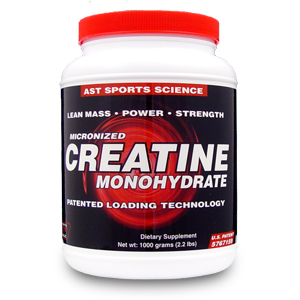


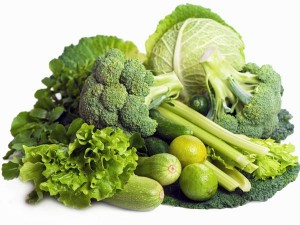

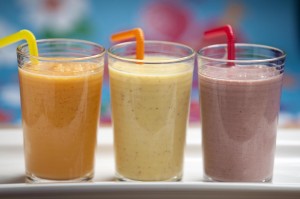
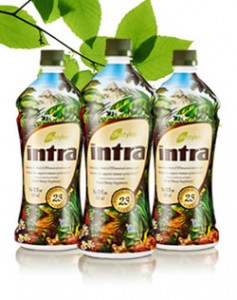




 hypoglycaemia and, as a result, limiting exercise capacity. In light of this, attention should be focused on nutritional interventions that aim to maximise endogenous glycogen stores (liver and muscle) before training sessions or competitive events. This strategy should allow training to be commenced with optimal glycogen stores that can be maintained throughout the exercise bout. The proposed mechanisms that explain exogenous carbohydrate supplementation include a muscle glycogen “sparing” effect (Tsintzas & Williams, 1995) and the maintenance of high blood glucose oxidation rates (Coyle et al, 1986).
hypoglycaemia and, as a result, limiting exercise capacity. In light of this, attention should be focused on nutritional interventions that aim to maximise endogenous glycogen stores (liver and muscle) before training sessions or competitive events. This strategy should allow training to be commenced with optimal glycogen stores that can be maintained throughout the exercise bout. The proposed mechanisms that explain exogenous carbohydrate supplementation include a muscle glycogen “sparing” effect (Tsintzas & Williams, 1995) and the maintenance of high blood glucose oxidation rates (Coyle et al, 1986). commencing training with “low” muscle glycogen leads to enhanced training adaptations when compared with “normal” glycogen levels. (Hansen et al, 2005; Yeo et al, 2008; Hulston et al, 2010) including increases in resting muscle glycogen, citrate synthase activity and the rate of whole body fat oxidation. In spite of this, however, it is important to critically assess; what are the “costs” of training with “low” glycogen levels and how can these be minimized?
commencing training with “low” muscle glycogen leads to enhanced training adaptations when compared with “normal” glycogen levels. (Hansen et al, 2005; Yeo et al, 2008; Hulston et al, 2010) including increases in resting muscle glycogen, citrate synthase activity and the rate of whole body fat oxidation. In spite of this, however, it is important to critically assess; what are the “costs” of training with “low” glycogen levels and how can these be minimized?
 This post started out to be a brief overview of fats and then my nerdy side kicked in and I wanted to address a wide range of questions; therefore, I decided to start a small series of fat related topics. So, the first post in quest to explain fat is to address why they have been vilified, and why the early research was not correct.
This post started out to be a brief overview of fats and then my nerdy side kicked in and I wanted to address a wide range of questions; therefore, I decided to start a small series of fat related topics. So, the first post in quest to explain fat is to address why they have been vilified, and why the early research was not correct..JPG)










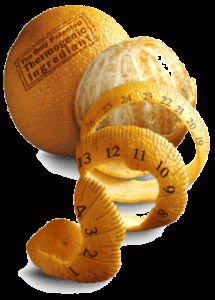

 Protein and fat are the two obligatory substrates people have to consume in order to sustain life, while carbohydrates are not. In layman’s terms, you have to eat fat and protein to live, while carbohydrates are just extra, you really do not need them to survive. If fat is entirely excluded from the diet of humans, a condition develops that is characterized by retarded growth, dermatitis, kidney lesions, and early death
Protein and fat are the two obligatory substrates people have to consume in order to sustain life, while carbohydrates are not. In layman’s terms, you have to eat fat and protein to live, while carbohydrates are just extra, you really do not need them to survive. If fat is entirely excluded from the diet of humans, a condition develops that is characterized by retarded growth, dermatitis, kidney lesions, and early death




